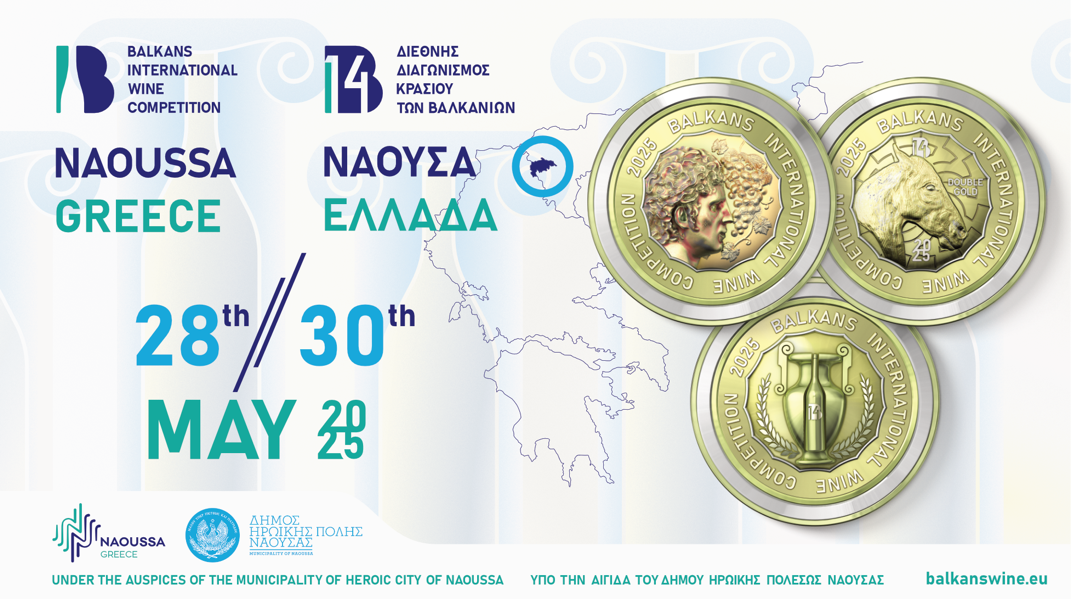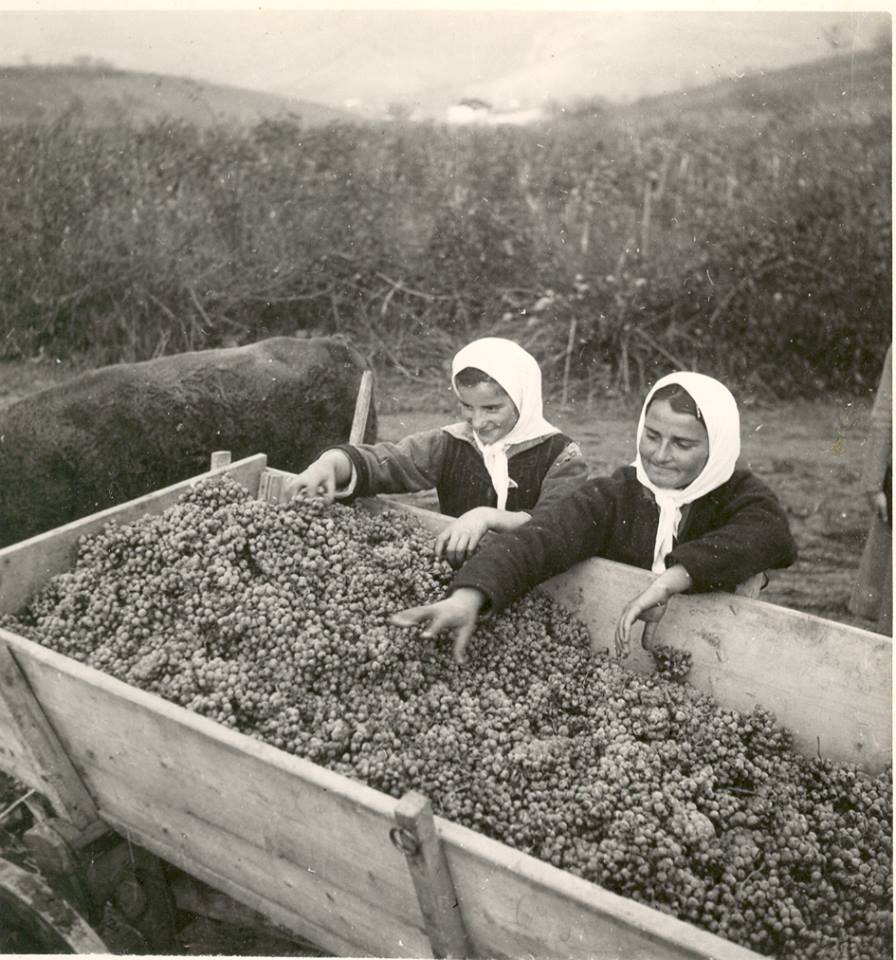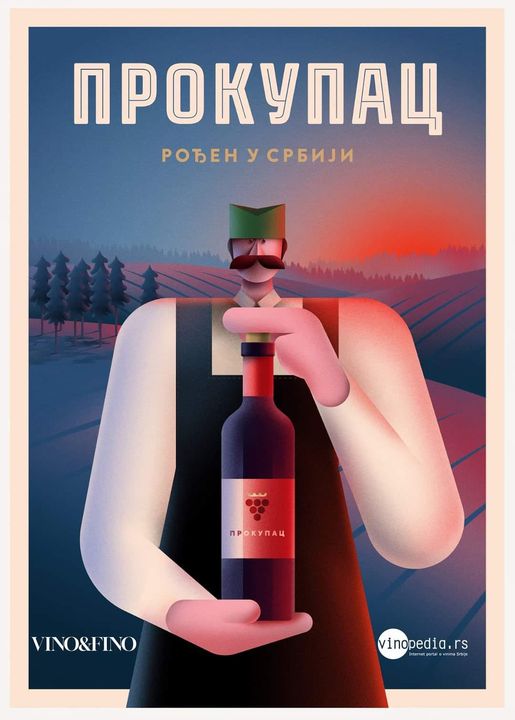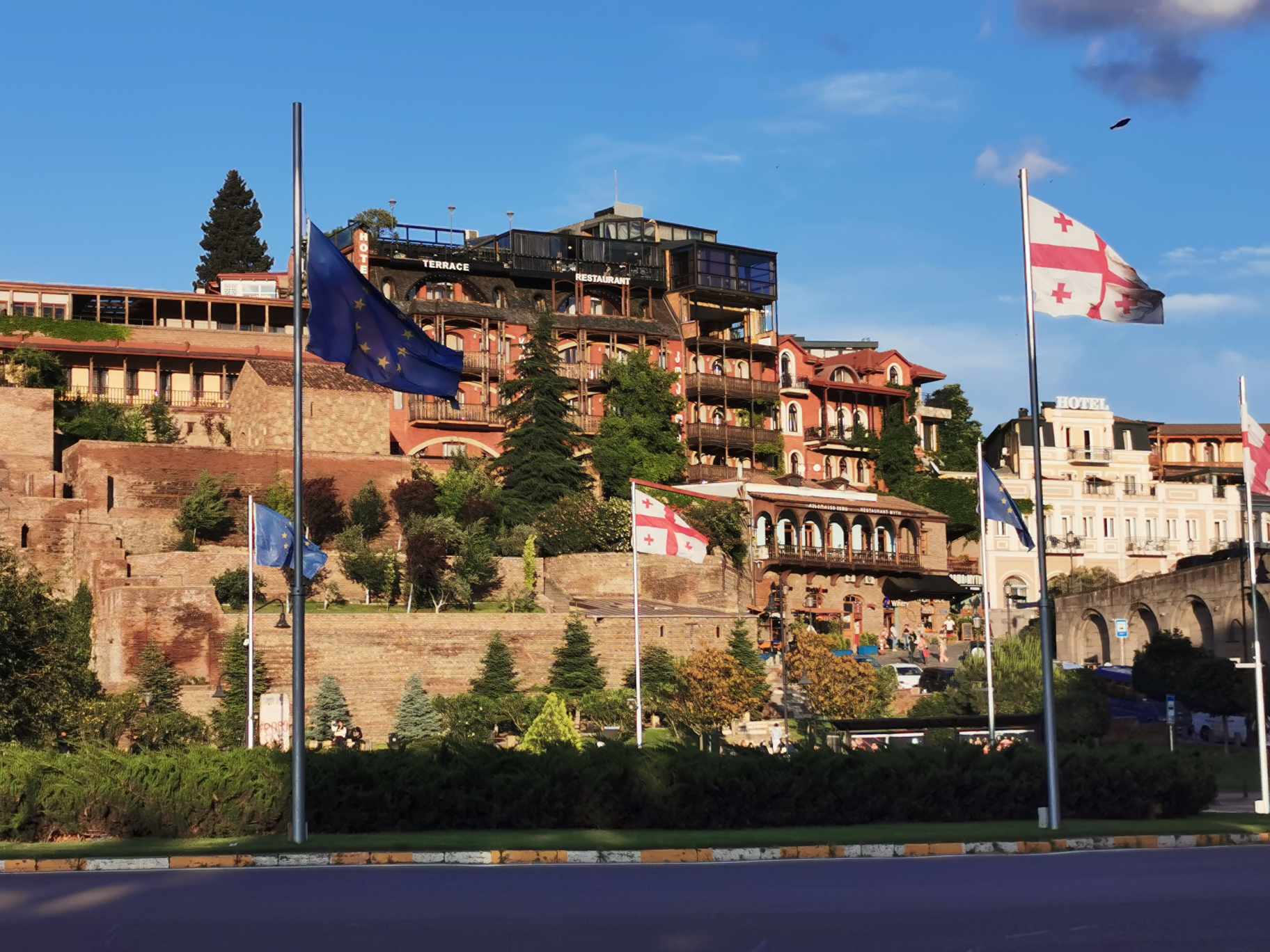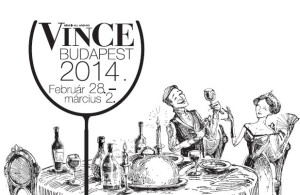
The Danube is surely the most important European river, 2850 km long, which flows from its source in Mt Schwarzwald (Germany) to the Black Sea across the border of 10 countries (Germany, Austria, Slovakia, Hungary, Croatia, Serbia, Romania, Bulgaria, Moldova, Ukraine).
Diversity and richness of this river is not constituted solely by flora and fauna and numerous natural reserves and national parks, but also by cultural-historical heritage of the nations that have lived on its banks for centuries… Therefore, the Danube can be regarded as the European Wine River, because exciting wine regions are scattered along its stream, each with its own specific features, grape varieties and wines.
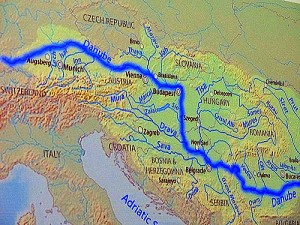
The Danube - European Wine Region
Roman Emperor Marcus Aurelius Probus (276-282) is thought to have planted grape vines in the Roman provence of Pannonia, exactly on the slopes of Mt Fruška Gora (north Serbia), on the river bank of the Danube. After the arrival of Slavic tribes on the territory of Central and East Europe, the Danube preserved its intrinsic connection with vines and wine-making. Tradition and culture of nations settled along the Danube skillfully intertwined local popular beliefs and natural dependence on grapes and wine-making. Numerous folk customs and popular rites which survive and live their mistic life nowadays bear witness to this. In East Serbia, in villages in the vicinity of the Danube, local inhabitants still believe and tell folk stories about water fairies (“vulve”). These are snake-like creatures which reside in the depths of the blue Danube. When storm and bad weather approaches from the west, they soar into the sky from the river bed and fight forces of nature, thus tearing apart the clouds and protecting their territory from hail-storm. Vinegrowers and farmers highly respected these creatures and in some villages, there is still a custom that farmers in East Serbia visit their vineyards at the beginning of the summer, chant and say prayers and place a pot filled with milk and an axe in the vineyard. These are gifts for water fairies, so that they would quench their thirst with milk, whilst the sharp edge of the axe would tear apart hail clouds.
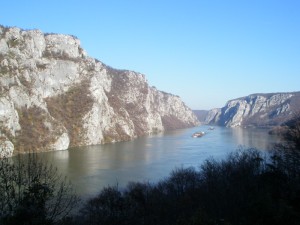
The Danube in east Serbia (© V. Nikolić)
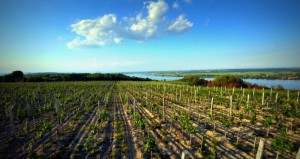
vineyards by the Danube-Matalj Winery (© M.Candir)
One of the most exciting Masterclass workshops at VinCE 2014 festival in Budapest was given by Caroline Gilby MW. Caroline is well-known throughout East Europe as the ambassador of "New Europe" wines and her intention was to present to wine-loving audience the entire range of styles, varieties and wine traditions of countries along the blue Danube. However, it must be pointed out that Caroline Gilby's choice of wines didn't focus only on wineries located along the Danube. Instead, her intention was to pick a wine from each country which duly represents contemporary local wine scene. The wines of Hungary(host country of the festival) and Ukraine were excluded from the selection (the latter owing to the fact that Caroline is not familiar with contemporary wine scene of Ukraine).
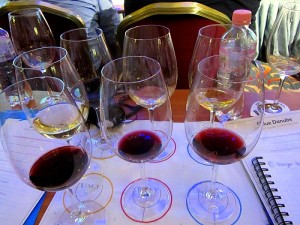
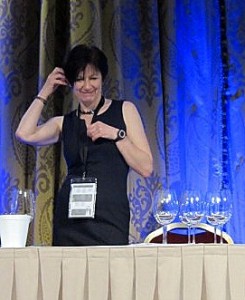
Caroline Gilby MW
1. Egon Müller Riesling QBA 2011 (Nemačka)
Egon Müller stems from a famous winemaking family that bought Scharzhof castle in Mosel (West Germany) back in 1797. Wine-making tradition passed from generation to generation, so nowadays these wines represent a blend of exquisite Scharzhofberger terroir and Egon Müller's experience and skills in the cellar. His philosophy is to let the wine make itself, organically, with as little intervention as possible and with natural fermentation in stainless steel tanks. The fact that Mosel represents the coolest wine region of Germany certainly helps to it. This wine is a blend of grapes from 5 different vineyards. Truly brilliant representative of German Rieslings, full-flavoured, with low alcohol level (11%)… The glass exudes everything: minerality, fruity aromas and vibrant acidity which guarantees longevity. Aromas of citrus fruit, green apple, lime dominate the nose. Although dry, this wine leaves sweet mouthfeel which simply neutralizes all traces of acidity and leads towards elegant harmonious finish.
2. Chateau Bela Riesling 2012 (Slovakia)
Another wine made from Rhine Riesling variety, but a completely different wine experience. Chateau Bela is known as the castle owned by Baron Ullmann and this estate is today surrounded by vineyards which are turned into wine by the owner of winery, Mr Miroslav Petrech. If we compare these two Rieslings, I think you will be surprised by persistence and intensity of acidity in this wine which are accompanied with minerality and 14% alcohol, thus attaining specific refined expressiveness. This sophistication and elegance of wine is further accentuated by subtle floral-fruity aromas on the nose…
3. Aleksandrović Trijumf Barrique 2012 (Serbia)
Trijumf wine made by Aleksandrović winery is well-known in Serbia and other countries of former Yugoslavia. The story about the varietal composition for Trijumf blend revealed by the royal cellar-keeper who found refuge in Canada speaks volumes about the history of Serbia and a constant quest for roots and restoration of former proven values. Over time, Trijumf got its logical upgrade – Trijumf Barrique. The magic formula of Trijumf Barrique: 85% Chardonnay, 15% Pinot Blanc and Riesling skillfully wrapped subtle tones of barrique barrels. In Caroline Gilby's personal opinion, this blend composition works quite well and results in a quite interesting wine. Besides, she stressed that the wine world doesn't often get an opportunity to come across wines from Serbia, so she feels glad that wine from Serbia appears on this kind of events with such a quality… The hour has come to taste more often such wines originating from Serbia.
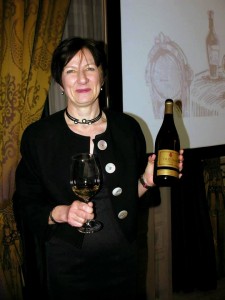
Caroline Gilby MW (© D. Jelić)
4. Weninger Blaufrankisch Saybritz 2011 (Austria)
40-year-old vineyards are located in south Burgenland, Eisenberg. Medium body, very fruity, yet elegant and with spicy aromas on the nose and mouth…Dominant notes of dark cherry, violet, raspberry and blueberry are accompanied with notes of eucalyptus, sweet spices, mint with lovely minerality in the mouth, which all results in a very pleasant rounded impressions that flow into a long finale.
5. Borovitza Gamza 2011 (Bulgaria)
Borovitza winery was founded as a result of restoring a winery from 1960s. Ognyan Tzvetanov, the owner, set out in a mission to discover small plots of land where old vines are growing and to make wine from grapes originating from these plots of land. Gamza variety is known to us as Kadarka. The wine aged in large oak barrels for 2 years. Light ruby-red voloured wine, the nose is dominated by aromas of blakberry and damp forest leaves. The mouth is soft, elegant, light with pleasant aromas of blackberry and plum, and long finish. Drinkable wine, but with enough character to make you wish for more of it in your glass.
6. Davino Domaine Ceptura 2009 (Romania)
Varietal composition: Feteasca Neagra, Merlot, Cabernet Sauvignon. The wine aged for 10 months in Romanian oak. Intense ruby-red wine with purple reflection. Very complex on the nose, with aromas of dark cherry, plum, pepper, coffee, oak. Expressive wine in the mouth, rounded with ripe tannins.
7. Negru de Purcari 2010 (Moldova)
Varietal composition: 70% Cabernet Sauvignon, 20% Saperavi, 10% Rara Neagra. The wine aged for three years in French barrique. Purcari winery was founded in 1827, and it belonged to Afono-Zagraf monastery at those times. The fame of this wine spread across the world when it was awarded a gold medal at the World Exposition in Paris in 1878. Darke red wine, intense and complex. Aromas of dark berries, plums dominate the nose, with notes of chocolate, coffee and sweet spices. Very pleasant mouthfeel with long harmonious finish.
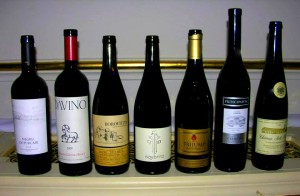
wines of the blue Danube
BACK TO CATEGORY
 The Danube is surely the most important European river, 2850 km long, which flows from its source in Mt Schwarzwald (Germany) to the Black Sea across the border of 10 countries (Germany, Austria, Slovakia, Hungary, Croatia, Serbia, Romania, Bulgaria, Moldova, Ukraine).Diversity and richness of this river is not constituted solely by flora and fauna and numerous natural reserves and national parks, but also by cultural-historical heritage of the nations that have lived on its banks for centuries… Therefore, the Danube can be regarded as the European Wine River, because exciting wine regions are scattered along its stream, each with its own specific features, grape varieties and wines.
The Danube is surely the most important European river, 2850 km long, which flows from its source in Mt Schwarzwald (Germany) to the Black Sea across the border of 10 countries (Germany, Austria, Slovakia, Hungary, Croatia, Serbia, Romania, Bulgaria, Moldova, Ukraine).Diversity and richness of this river is not constituted solely by flora and fauna and numerous natural reserves and national parks, but also by cultural-historical heritage of the nations that have lived on its banks for centuries… Therefore, the Danube can be regarded as the European Wine River, because exciting wine regions are scattered along its stream, each with its own specific features, grape varieties and wines. The Danube - European Wine Region
The Danube - European Wine Region The Danube in east Serbia (© V. Nikolić)
The Danube in east Serbia (© V. Nikolić) vineyards by the Danube-Matalj Winery (© M.Candir)
vineyards by the Danube-Matalj Winery (© M.Candir) Caroline Gilby MW
Caroline Gilby MW Caroline Gilby MW (© D. Jelić)
Caroline Gilby MW (© D. Jelić) wines of the blue Danube
wines of the blue Danube

